The Port of New York is one of the largest ports in the world, lying mostly around the East River and the North or Hudson River, and encompassing the Ports of both New York and New Jersey. The city is equally famous for its skyscrapers with the Flatiron Building of 1902 as the first of the giants and lavishly decorated with Florentine Renaissance motifs. The Woolworth Building of 1913 at 792 feet in height with sixty storeys in Downtown Manhattan was a Gothic giant decorated with gargoyles, frescoes, and stone lacework. The art deco Chrysler Building in Midtown Manhattan became the tallest structure in the city in 1929, but a year later the Empire State Building at 1,250 feet took over this lofty accolade. The view from the top of these skyscrapers, including the Cunard Building at the Battery Park end of Broadway, over the harbour is spectacular, taking in Downtown Manhattan, Governor’s Island and Brooklyn, with the Verrazano Narrows suspension bridge linking across to Staten Island in the distance. Ships of all types can be seen making their way to the Hudson River, and container ships can be seen in the distance making their way under the bridge and through the Kill van Kull tidal strait to the Port Newark and Port Elizabeth container terminals.
History Of The Port Of New York
Seven native Indian tribes lived in the Hudson River valley, but with the coming of the white man bringing smallpox, only a few hundred tribal members remained in 1700. The first two Europeans to arrive in this natural harbour were Giovanni da Verrazano in 1524 and Henry Hudson in 1609. However, it was the Dutch settlement of Nieuw Amsterdam in 1626 under the leadership of Dutch governor Peter Stuyvesant that turned New York into a civilised and independent city. The defeat of the Dutch by the Royal Navy made Stuyvesant surrender the port of New York to the British without a shot being fired, and he then swore allegiance to the British Crown to remain in the port for the remainder of his life. The population of New York was under five thousand in 1700, but the British Governors were open to bribes to flout port regulations, but worse still a strong spirit of independence was growing in the New England colonies.
A Free Press was obtained in 1735 as the result of a libel suit against Governor William Cosby, and thirty years later the Governor of the Port of New York was forced to accept a fixed salary, a humiliating action by local colonial citizens. Violent conflict between British soldiers and colonial citizens broke out in 1770, but George Washington knew he could not defend New York after his Declaration of Independence on 4th July 1776. George Washington left his Mount Vernon home on 16th April 1789 and came ashore two weeks later at New York to give his inaugural address as the first President, the new Constitution of the independent United States of America having been ratified by Britain in the previous year. One hundred years later, the population of New York celebrated the centennial of the new Republic, with President Benjamin Harrison, the 23rd President, making a speech after coming ashore at a Wall Street pier on 30th April 1889. President George Bush, the 41st President, made a similar speech to the nation on the bicentennial in April 1989.
New York City Hall was designed in 1811 by John McComb junior and Joseph Francois Mangin to be a blend of Federal and French Renaissance architecture, and has been the seat of New York City government since 1812. Marble cladding on the exterior, marble stairways and a fine internal domed rotunda encircled by ten columns are features. The Governor’s Room houses a portrait gallery of early New York leaders. The body of Abraham Lincoln lay in state in 1865 in the large room immediately after passing through the magnificent entrance.
The Statue of Liberty was the brainchild of French sculptor Frederic Auguste Bartholdi and was a gift from the French Government to the American people. It was unveiled by President Grover Cleveland on 28th October 1886. The golden torch held in the hand of Lady Liberty is coated in 24 carat gold leaf, and the seven rays on her crown represent the seven oceans. The Statue dominates New York harbour and is 305 feet in height. The Ellis Island Immigration Building was built along the lines of a train station with a majestic triple arched entrance, decorative Flemish bond brickwork, and granite quoins and belvederes. The Second Floor Registry Room of length 338 feet has a beautiful vaulted ceiling with tiles by Rafael Guastavino, under which the newly arrived immigrants lined up to have their documents checked and any undesirables, criminals and anarchists turned back.
The population of New York in 1900 was 3.4 million and was increasing rapidly with immigrants streaming through the Ellis Island dock at the rate of one hundred per hour. New reception facilities had just been completed at Ellis Island after a serious fire three years earlier. In numerical totals order of arrivals, the foreign immigrants were from Germany, Ireland, Canada, United Kingdom, Sweden, Slav republics, Poland and Italy. The native population and the immigrants shared the excellent New York public transport system of railroads, subways, bridges, rapid transit systems, buses, streetcars and the huge number of steam ferries that crossed the East and Hudson rivers to ply from Manhattan to New Jersey, Brooklyn and south to Staten Island and the lower harbour.
The steam ferries with their tall funnels were propelled by screws fore and aft and were owned by a dozen railroads as well as New York City. The latter had a dozen steam ferries criss-crossing the harbour and built locally by United Dry Docks, the Staten Island Shipbuilding Company or the Burlee Dry Docks. Most were named after the New York boroughs of Bronx, Brooklyn, Dongan Hills, Manhattan, Queens, Richmond and Tompkinsville, while others had typically American names, such as American Legion, Knickerbocker, President Roosevelt and Rodman Wanamaker. The luxury Knickerbocker Hotel in Manhattan was built in 1901 for John Jacob Astor (1864-1912) and was named after an iconic Dutch family associated with New York City. Today, ferries run from Pier 11 and Pier 79 to the St. George terminal on Staten Island, the Statue of Liberty and Ellis Island, Governor’s Island, Jersey City, Weehawken, Brooklyn and other New York boroughs.
Four bridges were constructed across the East River to Brooklyn and Queens between 1883 and 1909 that today are used toll free by cars. The Brooklyn Bridge (1883) is a hybrid cable stayed suspension bridge of 1,595 feet in length, the Williamsburg Bridge (1903) is a suspension bridge from Lower East Side Manhattan to Williamsburg (Brooklyn) of length 7,308 feet, the Manhattan Bridge (1909) is a suspension bridge from Downtown Manhattan at Canal Street of length 6,855 feet, and finally Queensboro Bridge (1909) is a two deck cantilever bridge carrying four lanes of traffic on the upper level and six lanes of traffic on the lower level from the Central Park area of Midtown Manhattan to Queens. Central Park is a large rectangular park with its own lake, playground and menagerie and is the ‘lung’ of Manhattan.
In 1921, the Port of New York Authority was established to manage the shared harbour interests of the Port of New York and the Port of Newark in New Jersey. This was the first time in American history that a shared agency was established under a Constitutional clause to allow a merger between agencies in two States. President Warren Harding in 1923 shortly before his death in office, called for increased subsidies for the shipping industry, with Prohibition, introduced on 16th January 1920, having precluded the sale of alcohol on all American ships and in all American homes. Americans turned to Cunard White Star Line from Pier 54 and from Piers 84 to 90 of ‘Luxury Liner Row’ and also to Furness Withy Bermuda Line for cheap overnight ‘booze cruises’ beyond the three mile limit to nowhere. A single class fare structure was introduced for these popular cruises, but longer Caribbean cruises of eleven days cost $140 and for fifteen days they cost $182.
The first action of the new Port Authority of New York and New Jersey was to build inter-state crossings e.g. the George Washington Bridge, and the Bayonne Bridge of length 5,780 feet and completed in November 1931 connecting Staten Island to Bayonne (NJ) over the Kill van Kull tidal strait with an initial air draft of 151 feet and raised to 215 feet in recent reconstruction, and the Lincoln Tunnel and other tunnels. However, the Stock Market crash of late November 1929 put a brake on this with fifteen million Americans out of work for several years, many of the unemployed living in New York. There was no unemployment benefit, and New Yorkers stood in long queues to be fed at soup kitchens. Herbert C. Hoover (President 1929-1933) and Franklin D. Roosevelt (President 1933-1945 after winning an unprecedented four terms as President) surrounded themselves with Wall Street internationalists who fully understood that the important and longed for recovery was dependent on a prosperous and open global economy. One of these people was Henry Lewis Stimson, a Wall Street lawyer, and a member of one of the richest New York families with luxury homes in New York, Long Island and Washington. He was made Secretary of State by President Herbert Hoover in 1929, and he and his colleagues introduced work creation measures. President F. D. Roosevelt is thus chiefly remembered today for having dug the USA out of the greatest ever financial Depression, and also as its war leader.
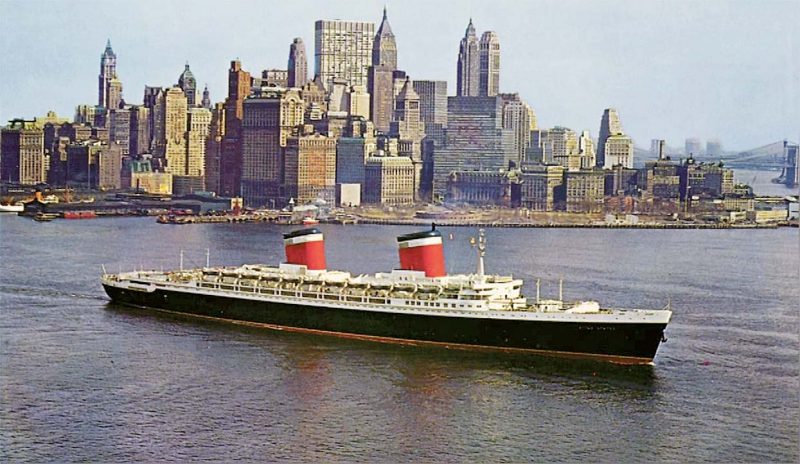
Traffic, Industrial Production And Piers In 1939/40
Imports (Million Tons)
| Crude oil | 19.0 |
| Minerals, ores | 5.0 |
| Foodstuffs | 3.5 |
| Raw sugar | 1.4 |
| Timber, potash, nitrates | 1.0 |
| Iron and Steel | 0.75 |
| Coffee | 0.4 |
| Bananas and fruit | 0.4 |
| Finished products | 0.25 |
| TOTAL | 31.70 |
Exports (Million Tons)
| Refined petroleum | 2.0 |
| Grain, wheat, flour | 2.0 |
| Iron, steel, machinery | 2.0 |
| Fruit and dairy products | 1.0 |
| Oilcake, chemicals, coal | 0.7 |
| Refined sugar | 0.6 |
| Cement, rubber, paper | 0.2 |
| Miscellaneous | 1.0 |
| TOTAL | 9.5 |
Industrial Production
(As percentage of national production)
| Chemicals | 45% |
| Copper production | 30% |
| Silk, rayon, thread | 30% |
| Sugar refining | 25% |
| Electrical machinery | 25% |
| Paper and leather goods | 20% |
| Refined petroleum | 10% |
| Iron and Steel | 5% |
| Agricultural products | 5% |
| Fertilizers | 5% |
| Flour | 5% |
| Processed food | 5% |
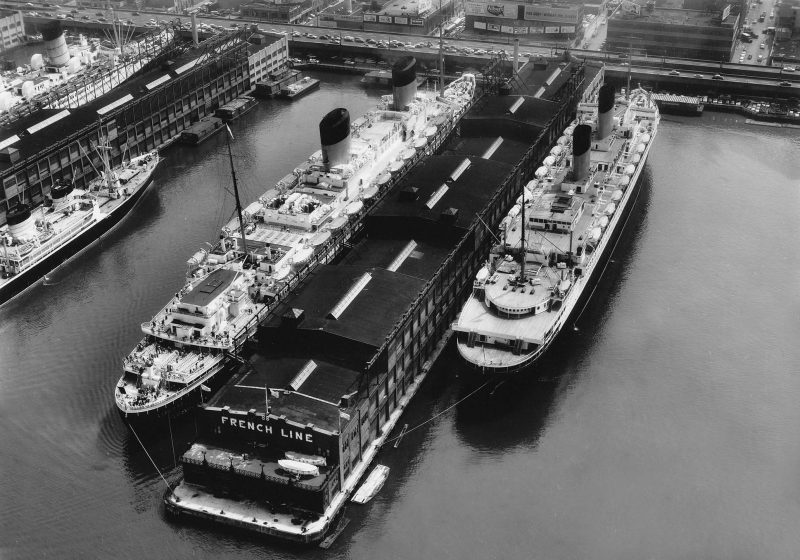
East River Piers
- Columbia Line
- Norwegian America Line
- Royal Netherlands Steamship Company
- Moore McCormack Line
- NYK of Japan
- Neptune Shipping Inc.
- French Line
- Agwilines
- Fulton Line
- International Freighting Corporation
- Arundel Freight Corporation
- New York Dock Company
- Baltimore & Ohio Railroad
- Delaware & Lackawanna Railroad
- New York Central Railroad
- New York Harbour Railroad
- Central Viaduct Railroad
- Erie Rail Road
- Lehigh Valley Railroad
- Wall Street Skyport
North (Hudson) River Piers
- United Fruit Company
- Munargo Line
- Ellerman & Bucknall Lines
- Eastern Steamship Company
- Moore McCormack Lines
- Clyde Mallory Lines
- Agwilines
- Morgan Line
- Sheppard Steamship Company
- Cunard White Star Line
- Grace Line
- United States Lines
- Panama Pacific Line
- Wilson Line
- Ellerman’s Wilson Line
- Hencken Line
- Hudson River Day Line
- Furness, Withy Bermuda Line
- New York Central Railroad
- Pennsylvania Railroad
- Erie Railroad
- Baltimore and Ohio Railroad
- Delaware and Lackawanna Railroad
- Lehigh Valley Railroad
- West Shore Railroad
- New York Foreign Trade Zone
Jersey City/Hoboken/Weehawken Piers
- Moore McCormack Lines
- American Export Lines
- Dollar Line
- Red Star Line
- United States Lines
- American France Line
- Holland America Line
- Wilson Line
- Ellerman’s Wilson Line
- Gdynia American Line
- Scandinavian America Line
- Lamport and Holt
- Seatrain Lines
- Black Diamond Lines
- Standard Oil Refineries
- United Dry Docks
- Harms Brothers Lighterage
- Berwind Coal Company
- Baxter Wright Freight
- Colgate Palmolive Corporation
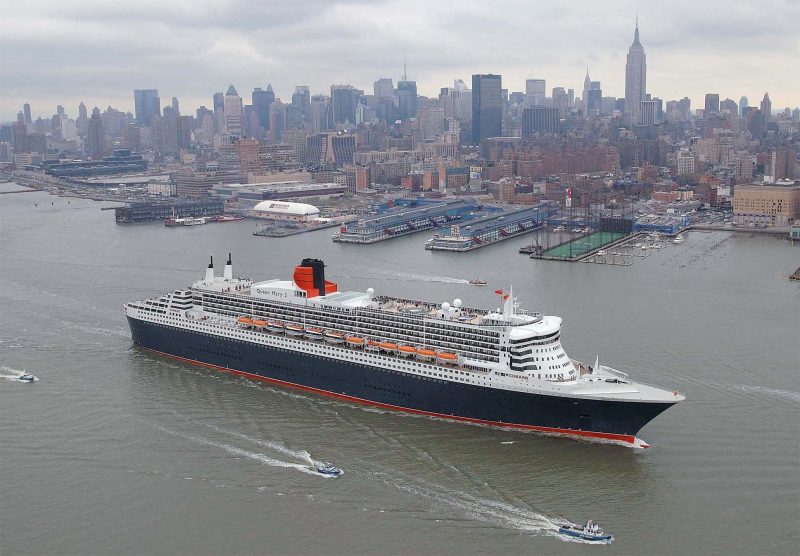
It can be seen from the above that two thirds of New York piers lie on the Hudson river with only one third on the East river, and the greatest concentration of those on the Hudson river lie on the Manhattan side. The great rail roads that fed into New York from as far west as Chicago, with only one exception, terminated on the Manhattan side of the Hudson river rather than on the New Jersey side. The real New York and the majority of its population lie in Manhattan and the boroughs on the west end of Long Island e.g. Brooklyn and Queens. The Hudson river had the greatest concentration of lighterage businesses in the world e.g. Harms Brothers lighterage. This was one of the reasons why the Port Authority of New York and New Jersey was set up in 1921 as the barges and the floating elevators of the Authority are essential parts of the working of the port, and the piers often offer only temporary ground space for cargoes before rapid transfer to their real destinations.
All of the main navigation channels from the outer harbour through the inner harbour and those of the Hudson and East rivers are today dredged to a minimum depth of fifty feet. The tides are less than five feet in height and there is only minimal disruption to traffic from thick fog in the outer harbour. Thus the Port of New York and New Jersey has many natural advantages, and is sheltered by the natural breakwater of Long Island. New York was a natural point of convergence for coastal traffic from the Boston area through the East river, and also from overland traffic from Philadelphia and Baltimore. Leaving aside the coastal and imported petroleum in 1939/40, of the remaining 12.7 million tons the greatest amount was imported from the Transatlantic trades. Chemicals, metals and fertilizers came from Germany, iron and steel from Rotterdam and Antwerp, timber and ores from Scandinavia, textiles, cement and earthenware from the U.K., and chalk, talcum, asbestos, glassware and other luxury manufactures from France. Central and South America provided the second largest imports into New York of fruit, coffee, oilseeds, vegetable oils and other foodstuffs, while the Mediterranean countries and India, Malaya and the Indian Ocean area provided the third largest imports e.g. rubber and latex, jute, tin, vegetable oils, nuts, fruits and other foodstuffs.
The huge import of crude oil (19 million tons) destined for the New Jersey and Bayonne refineries came mostly coastwise from Texas and other American ports (12 million tons) with the remainder shipped in from Venezuela, Aruba, Curacao, Trinidad and other sources with Persian Gulf imports only starting in post World War II years. Exports from New York in 1939/40 were only one third of imports, with the U.K. as the single most important market followed by other European countries, South America and the Caribbean, and the Mediterranean area.
The port and its many passenger piers e.g. ‘Luxury Liner Row’ were the departure points for hundreds of thousands of American troops in grey painted troopships bound for English and Scottish ports to be ready for the great invasion at Normandy on D-Day of 6th June 1944. The port needed large amounts of investment in the immediate aftermath of war, and huge amounts of New Deal finance was made available to Mayor Fiorello La Guardia for much rebuilding of the port and also the new La Guardia airport. The opening of the Battery Park to Brooklyn tunnel in 1948 passed under and just to the north of Governor’s Island. The latter was called ‘Nut Island’ by Native Americans and ‘Noten Eylant’ by the Dutch, who settled on the island in 1624. However, until 1995 it was home to 3,500 Coast Guard employees and their families, but today it is open for public use with a lovely ferry ride from Manhattan.
In the 1950s and 1960s decades, the expansion of trade and the development of port infrastructure of tunnels, bridges, and cargo terminals were the chief aims of the Port Authority of New York and New Jersey. The culmination was the opening of the twin towers of the World Trade Centre in Lower Manhattan, the Verrazano Narrows Bridge at Staten Island with an air draft of 228 feet as a double decked suspension bridge with a central span of 4,260 feet completed in November 1964, the first container terminals, as well as Teleport in Staten Island, and other industrial, commercial and recycling wharves. The Port Authority assumed responsibility to operate Port Newark in 1948, at a time when the port was greatly in need of repair.
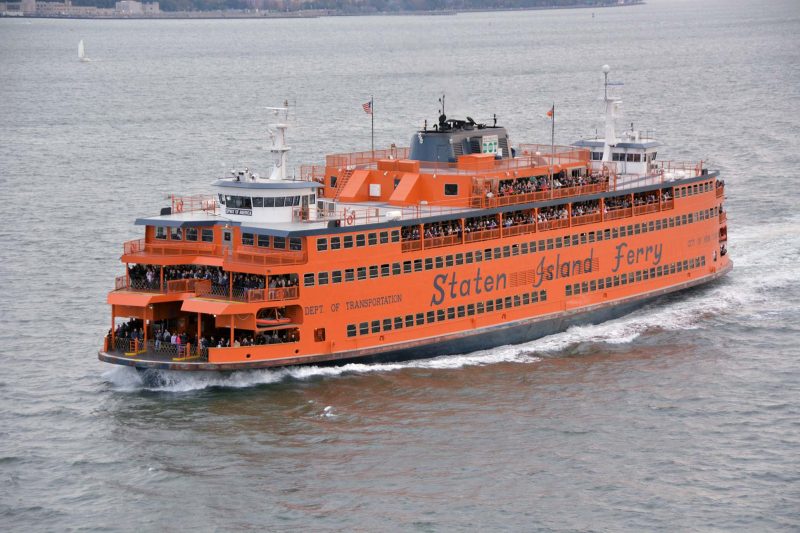
The Modern Port Of New York And New Jersey
In 2015, total port traffic figures amounted to 36.55 million metric tonnes, with 26.0 million metric tonnes of imports and 10.55 million metric tonnes of exports. Container throughput was 3.35 million TEU, with 51.5% by weight of imports being by container and 67.5% by weight of exports by container. Reefer containers handled numbered 240,000 with over 4,200 reefer plugs available in the port. There are four container terminals, three cruise terminals, two dry bulk terminals, six petroleum refineries and scrap metal recycling plants, and three ro-ro terminals handling 700,000 cars and wheeled traffic. In addition, 128 acres of land was purchased in June 2010 from the Bayonne (NJ) authorities to become another new container terminal, with most of the largest container ships in the world shortly able to pass beneath the reconstructed Bayonne Bridge into Bayonne.
Container Terminals
Red Hook Marine Terminal at Atlantic Basin in Brooklyn built in the 1980s with six gantry cranes on the 2,080 feet long berth, with another 3,140 feet of breakbulk quay for two major bulk handling berths and yards and 400,000 square feet of warehouses.
Howland Hook Marine Terminal was built by American Export Lines and is located in north west Staten Island and was purchased by New York City in 1973 for $47.5 million and leased by the Port Authority of New York and New Jersey in 1985. A large area of 311 acres includes the former shipping port of Procter and Gamble Inc., which is a 3,012 long wharf on the tidal Arthur Kill Strait with three berths for container ships and a planned fourth berth of 1,340 feet in length with an alongside depth of fifty feet. There are nine gantry cranes, with depth alongside varying from 37 feet to 45 feet, and the terminal is managed by GCT New York.
Port Jersey Marine Terminal was acquired in July 2010 by the Port Authority, with 99 acres of land, a berth of length 1,800 feet, six gantry cranes and alongside depth of 43 feet. There are plans for a major redevelopment including a new ExpressRail container terminal servicing the terminal. Rail track of length 42,000 feet will be laid and several rail mounted gantry cranes. Two new rail to barge transfer bridges, two new barges of eighteen railcar capacity, and other facilities are planned at a total cost of $356 million. Terminal is managed by GCT Bayonne.
Port Newark-Elizabeth Marine Terminal. This was the first container terminal in the country when opened on 15th August 1962, and is now the busiest on the Eastern Seaboard and the third busiest in the country. It is the principal container ship facility for goods imported and exported from the port, with a big hinterland of the north east part of the country. It has two terminals, Port Newark and Port Elizabeth, sitting side by side. Container ships access the terminals via the Verrazano Narrows and the Kill van Kull tidal strait. The terminals cover 180 acres, each terminal with two berths with multiple gantry cranes.

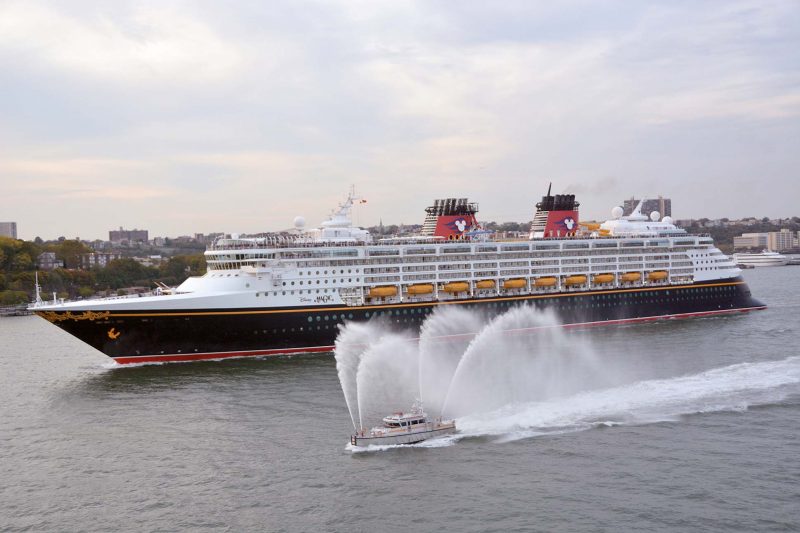
Cruise Terminals
Cape Liberty Cruise Port, Upper Bay at Bayonne opened in May 2004 and was formerly the Bayonne Navy Base and the Military Ocean Terminal Bayonne. The Voyager of the Seas inaugurated the facility on 14th May 2004, which is operated by Cape Liberty Cruise Port LLC.
Brooklyn Cruise Terminal, Upper Bay opened in April 2006 on an outside berth of the Atlantic Basin at Brooklyn and opposite Governor’s Island. The passenger terminal is of 182,000 square feet and there is a similar amount of area for car parking. The QM2 of Cunard Line, Princess Cruises, Carnival Cruises and over forty more cruise ship lines have so far berthed at the terminal.
New York Passenger Terminal on the Hudson river was rebuilt in 1970 from the former ‘Luxury Liner Row’ (Piers 84 to 90) on the Manhattan side of the river. It is now known as the Manhattan Cruise Terminal with five berths for cruise ships of up 1,000 feet in length, with further upgrades in 2004 costing $200 million at Piers 88 and 90 to allow the terminal to turn round the biggest cruise ships in the world, and passenger boarding bridges costing four million dollars installed. The terminal is owned by the City of New York and operated by Ports America.

Dry Bulk Terminals
Global Marine Terminal in Jersey City with Berths 17, 23 and 25 offering direct rail and track access without height restrictions for bulk, breakbulk and project cargo. Reefer cargo is handled by seventeen cold stores located throughout the port.
Maher Terminal in Elizabeth (NJ) and ExpressRail Elizabeth with the adjacent APM Terminals container base for Maersk Line. The bulk cargoes are handled on ten berths and include gypsum, fruit and citrus, cement, scrap metal, oil tanks and petroleum coke, grain, salt and other bulk cargoes.
Ro-Ro Terminals
South Brooklyn Marine Terminal (SBMT) is an intermodal shipping, warehousing and manufacturing complex in the Sunset Park district of Brooklyn. It was reactivated in June 2015 and together with the nearby Red Hook Container Terminal has seen ships once again berthed on the Brooklyn waterfront instead of docking in New Jersey.
Port Newark/Elizabeth (NJ) Marine Terminal handles a wide range of cars including General Motors, Honda, Volvo, Ford, Ferrari, Lamborghini, Maserati, BMW and many other makes of cars and trucks. The terminal area of 318 acres has plenty of car parking space, with car carriers of a dozen different lines using the ro-ro berths.
Auto Marine Terminal in Jersey City handles cars for Toyota Logistics, Lexus Logistics and SCION of Japan.
Oil Refineries And Scrap Metal Recycling Plants
Bayway Refinery is owned by Phillips 66 and is the northern most refinery on the Eastern Seaboard, processing 280,000 barrels per day of crude oil and producing 145,000 barrels per day of gasoline and 110,000 barrels per day of distillates.
Exxon Bayway Refinery at Linden (NJ) opened in 1909 for Standard Oil owned by John Davison Rockefeller (1839-1937) and his family, and was sold in April 1993 for $175 million to the Tosco Corporation of Stamford and has a similar throughput to the Phillips 66 refinery.
Newtown Creek oil storage and scrap metal facilities in this tidal area between Brooklyn and the southern border of Queens borough. In the 1850s, this was a grossly polluted area of fifty refineries, glue and fertilizer factories, sawmills and timber and coal yards.
Passaic River flowing ninety miles from Newark Bay was a cradle of manufacturing industry and has had a long cleanup operation but is still home to scrap metal yards.
Gowanus Canal in South Brooklyn borders the neighbourhoods of Red Hook, Gowanus and the giant Red Hook Container Terminal. This was once a busy cargo handling canal area but became one of the most polluted areas of water in the country. It is still used today for oil storage by Bayside Fuel Oil, and scrap metal and aggregates operators with tugs and barges navigating the canal daily.
Foreign Trade Zone 49
This Free Trade Zone is located within the Ports of Newark and Elizabeth in New Jersey. It has multiple use warehouses for storing cars, trucks, frozen orange juice concentrate, chemicals, pharmaceuticals and other high value products.
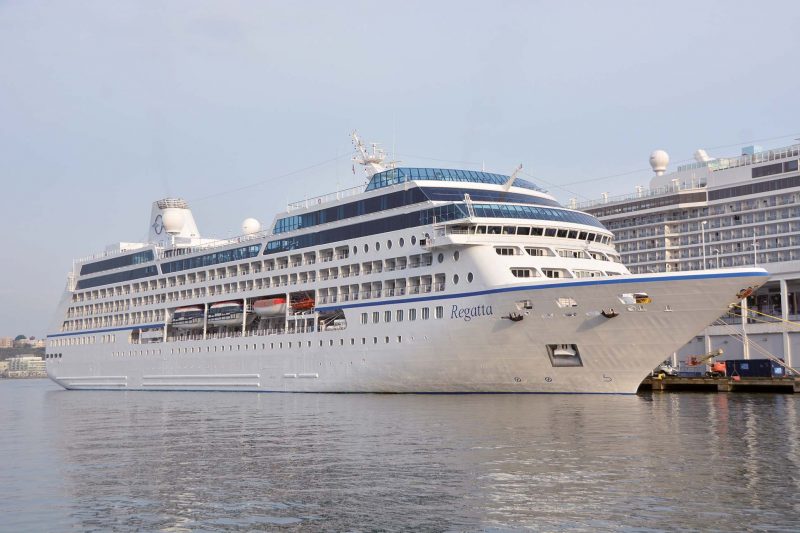
Port Trade In 2015
Imports (Million Tons)
| General cargo | 26.1 | |
| Bulk | 7.2 | |
| Oil | 25.5 | |
| TOTAL | 58.80 |
| Containers (Million TEUs) | 3.2 |
| Vehicles (Millions) | 0.4 |
Exports (Million Tons)
| General Cargo | 10.6 | |
| Bulk | 2.4 | |
| Oil | 1.7 | |
| TOTAL | 14.7 |
New York Tugs
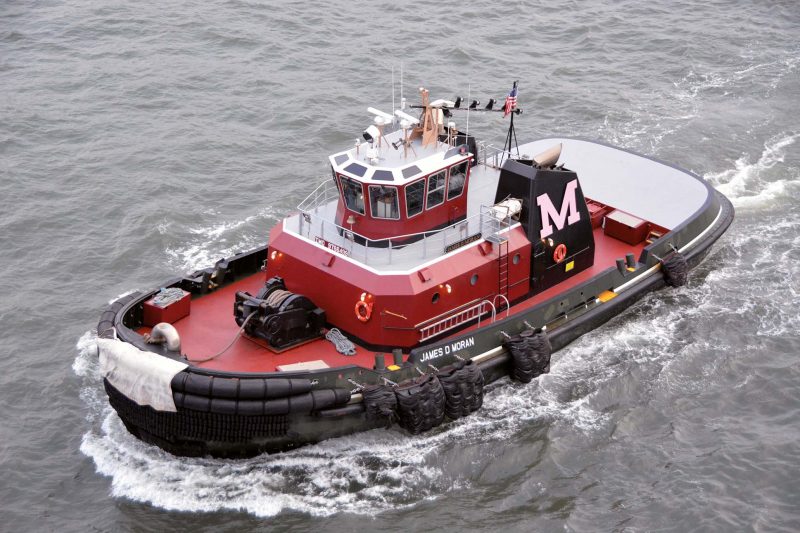
Moran Towing And Transportation Inc.
Michael Moran began towing operations in New York harbour in 1860 by opening a towage brokerage. The first tug, Ida Miller, was purchased three years later for $2,700, and Michael Moran painted the first white ‘M’ on the funnel of one of his tugs in 1880. A Moran tug was the first vessel to enter Havana harbour at the end of the Spanish American War in 1898. The Panama Canal opened in 1914 after Moran won the contract to transport excavated material during its building, the tugs reaching the Pacific side of the canal via Cape Horn. Tugs were chartered out to the British Government during WWI, and one hundred Moran and Government tugs were managed during WWII on tasks including the towage of the Mulberry Harbour sections across the channel after D-Day. A big fleet of 35 tugs of up to 4,300 bhp was owned on the centenary of the company. The company ceased to be family owned in 1994, and then purchased several Eastern Seaboard tug companies between 1998 and 2007. Today, Moran tugs are to be found in sixteen U.S. ports and five LNG terminals from New Hampshire to Mexico. The current fleet totals 395,000 bhp with Paul T. Moran of 7,200 bhp to be seen at work in New York harbour towing large container ships.
McAllister Towing And Transportation Inc.
The McAllister brothers began their towage business in 1864 in New York harbour, and have recently celebrated 150 years in marine towage. Currently, 75 tugs, crew boats and barges of up to 6,000 bhp are at work in a fleet of 275,000 bhp. They are to be found at seventeen ports from Portland (Maine) to San Juan (Puerto Rico) including New York, Baltimore, Charleston, Norfolk (Virginia), Jacksonville, Port Everglades, Miami, Providence and Wilmington. Two powerful tugs are also available for charter work in ocean towage.
Postscript
Container ships of many lines that can be seen in New York Harbour include ACL, Alianca, ANL, APL, Bahri Line, China Shipping (CSCL), CMA CGM, CSAV, Hapag Lloyd, ‘K’ Line, NYK, OOCL, Seaboard Marine, UASC, Yang Ming, Zim Line and many others. Many things have changed in the port, the old Lackawanna Rail Road steam ferries and their competitors across the Hudson River are long gone, replaced by many ship types that one could never have dreamt would be built in those far off days of the inter war years. The Port Authority has invested two billion dollars since the Millennium to prepare the port, the third largest in the U.S.A., for future growth.
The first time that one sails into New York harbour is memorable with the Statue of Liberty to port, and the skyscraper skyline of Lower Manhattan to starboard. New York has the best shopping, the best and most varied cuisine, the best entertainment, as well as interesting places to visit e.g. the Empire State Building, the Chrysler Building, the Metropolitan Museum of Art, Times Square, Wall Street, the historic sailing ships of South Street Seaport, Chinatown, Central Park, the Rockefeller Centre, Union Square and many more attractions.
The Twin Towers of the World Trade Centre in Downtown Manhattan were destroyed by terrorists in September 2001, killing three thousand people and destroying another building, but this area has now recovered due in the most part to the resolve and determination of New York residents not to be intimidated and in total defiance of the terrorists.
The busy Pier 11 ferry terminal on the East river at Wall Street is the main departure point of the ferries to Brooklyn.
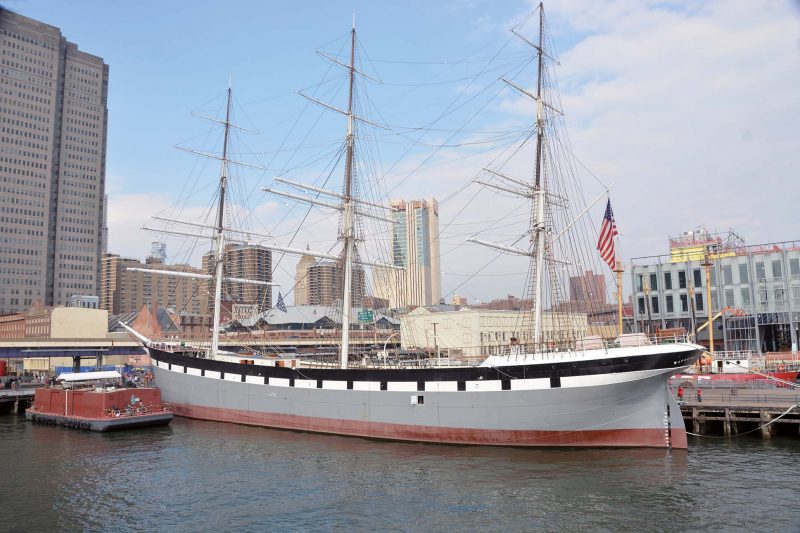
There are some historic ships moored at Piers 16 and 17 in South Street Seaport:-
The three masted sailing ship Wavertree built at Southampton in 1886 of wrought iron for R. W. Leyland and Company of Liverpool to carry jute between Calcutta and Dundee to make rope and burlap bags.
- After two years in this trade, she moved to general tramping and was dismasted off Cape Horn in December 1910, reaching the Falklands, but was not re-rigged and sold as a floating warehouse at Punta Arenas.
- She was acquired by South Street Seaport in 1968.
- The four masted sailing ship Peking, built in 1911 for F. Laeisz Lines of Hamburg as one of the famous ‘Flying P’ barques employed in the nitrate trade from Chile, was berthed here for many years, but is currently undergoing refurbishment on Staten Island before being returned to her home port of Hamburg.
- The coastal schooner Pioneer built in 1885 as a sloop but re-rigged as a schooner in 1895, she sails daily in New York harbour from May to October.
- The fishing schooner Lettie G. Howard built in 1893.
- The wooden tug W. O. Decker built in Queens in 1930 for the Newtown Creek Towing Company of Brooklyn.
- The lightship Ambrose built in 1907 for service in Lower New York Harbour, and famous as the finishing line for Blue Riband record voyages from Southampton or Queenstown.
The Port Authority of New York and New Jersey has a heliport at Pier 70 at West 30th Street in Manhattan on the Hudson river, and the excellent Circle Line harbour tours by boat leave further up the Manhattan quays at Pier 83. The North Cove and South Cove yacht harbours just to the north of Battery Park give relief to the business and financial areas of Downtown Manhattan.
A visit to the Port of New York and New Jersey ranks high on the agenda of all shiplovers.

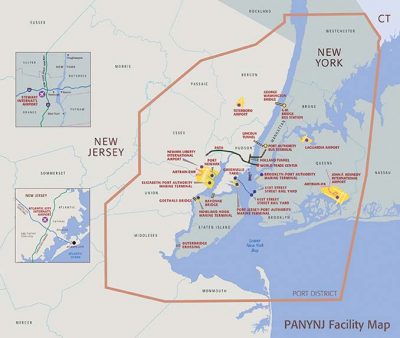
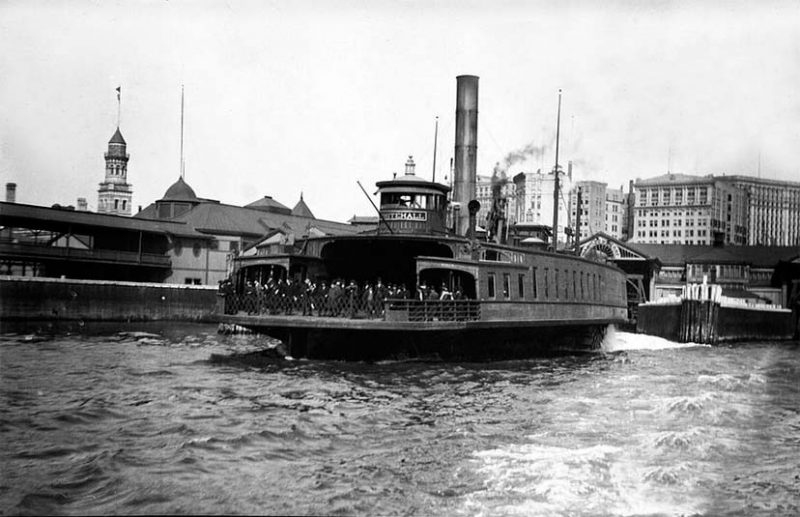




Comments
Sorry, comments are closed for this item